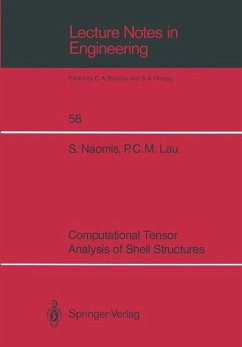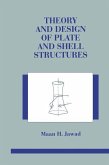This book presents a method which is capable of evaluating the deformation characteristics of thin shell structures A free vibration analysis is chosen as a convenient means of studying the displacement behaviour of the shell, enabling it to deform naturally without imposing any particular loading conditions. The strain-displacement equations for thin shells of arbitrary geometry are developed. These relationships are expressed in general curvilinear coordinates and are formulated entirely in the framework of tensor calculus. The resulting theory is not restricted to shell structures characterized by any particular geometric form, loading or boundary conditions. The complete displacement and strain equations developed by Flugge are approximated by the curvilinear finite difference method and are applied to computing the natural frequencies and mode shapes of general thin shells. This approach enables both the displacement components and geometric properties of the shell to be approximated numerically and accurately. The selection of an appropriate displacement field to approximate the deformation of the shell within each finite difference mesh is discussed in detail. In addition, comparisons are made between the use of second and third-order finite difference interpolation meshes.








